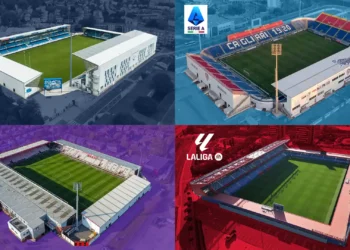Since 1930, the FIFA World Cup has showcased the world’s best stadiums — places where football history is written, legends are born, and unforgettable moments echo forever.
From the early concrete bowls of South America to today’s ultra-modern architectural marvels, World Cup stadiums have evolved dramatically. Yet some venues stand above the rest: not just because of their size or design, but because of the moments they hosted.
These are the greatest stadiums in World Cup history — the arenas that shaped the tournament, defined eras, and became global icons from Uruguay 1930 to the USA in 2026.

1. Estadio Centenario – Montevideo, Uruguay (1930)
The birthplace of the World Cup.
Centenario is a national monument in Uruguay and the stadium where the first-ever World Cup final was played. With its iconic tower and steep stands, it remains one of the most historically important stadiums in football.
Why it’s legendary:
- Hosted the first World Cup final
- Symbol of global football’s origins
- Powerful and historic architecture
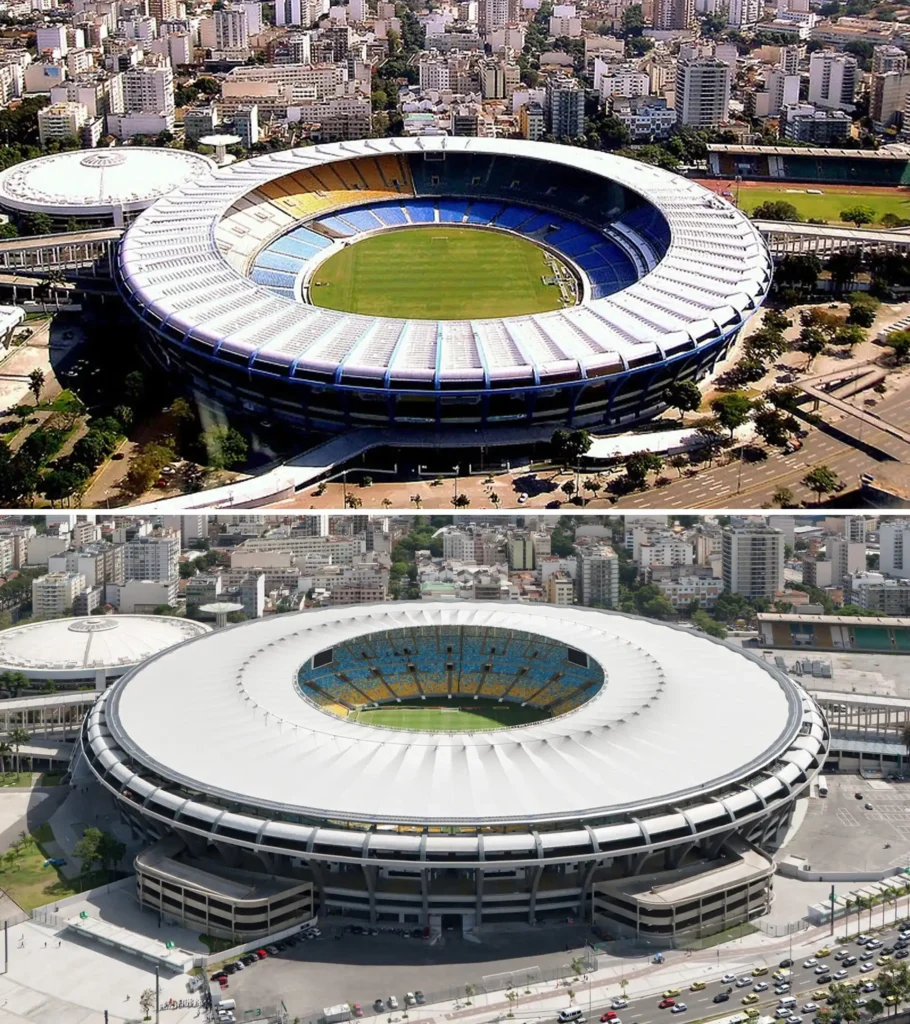
2. Estádio do Maracanã – Rio de Janeiro, Brazil (1950 & 2014)
Perhaps the most iconic stadium in world football.
When it opened for the 1950 World Cup, Maracanã was the largest stadium ever built. It has hosted two World Cup finals — 1950 and 2014 — something no other stadium can claim.
Why it’s legendary:
- Two World Cup finals
- “Maracanazo” — one of football’s biggest shocks
- Stunning aerial setting surrounded by Rio’s skyline
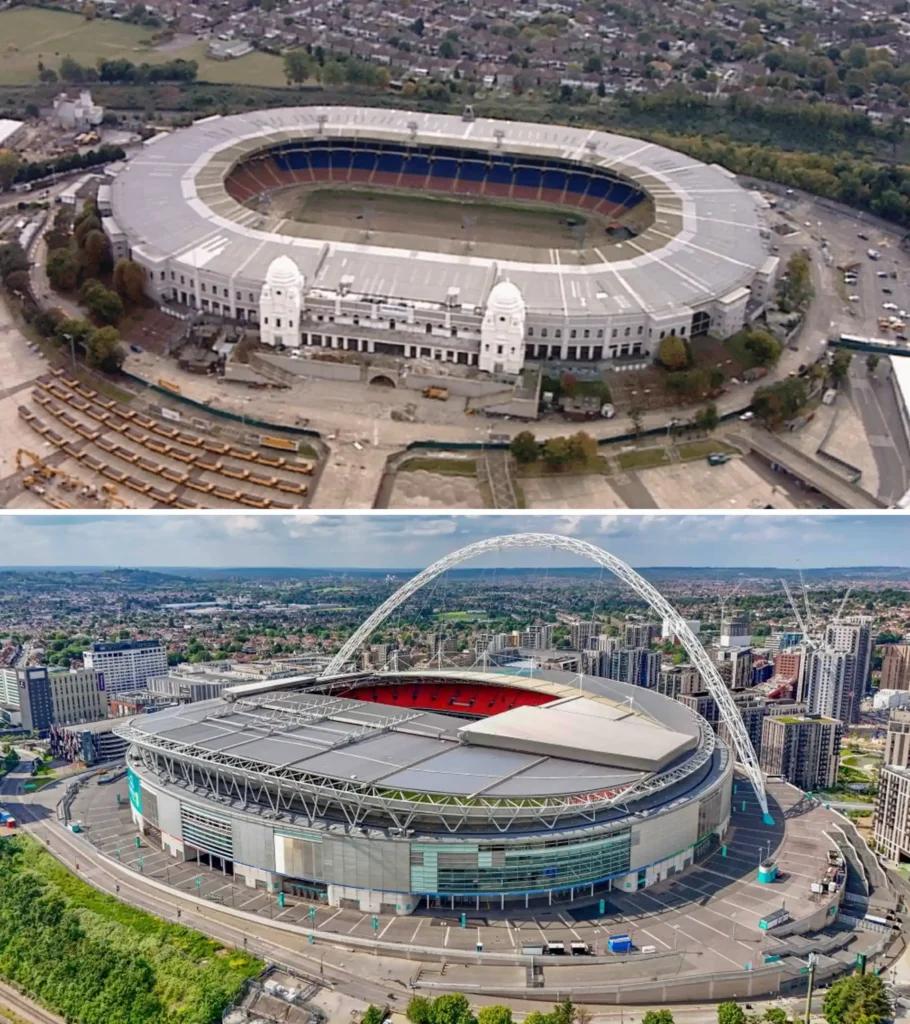
3. Wembley Stadium – London, England (1966)
The home of England’s most historic moment.
The old Wembley, with its twin towers, is still considered sacred football ground. The 1966 World Cup final — England’s only World Cup win — cemented its status forever.
Why it’s legendary:
- Iconic Twin Towers
- 1966 World Cup final
- Considered the “Cathedral of Football”
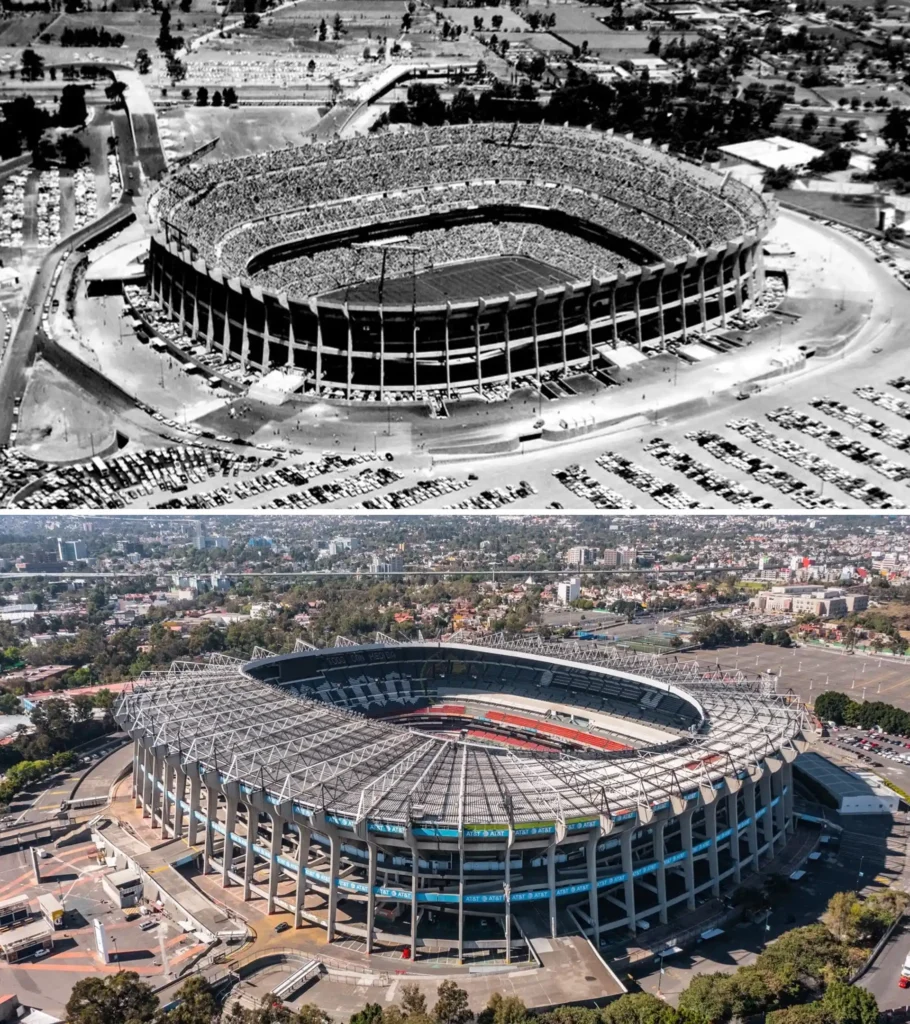
4. Estadio Azteca – Mexico City, Mexico (1970, 1986 & 2026)
The second stadium to ever host two World Cup finals — plus the sites of some of the greatest matches in football history.
Pelé lifted his final World Cup here in 1970, and Maradona created immortal moments in 1986.
Why it’s legendary:
- Hosted 3 World Cup finals
- “Goal of the Century” & “Hand of God”
- Massive capacity with volcanic atmosphere
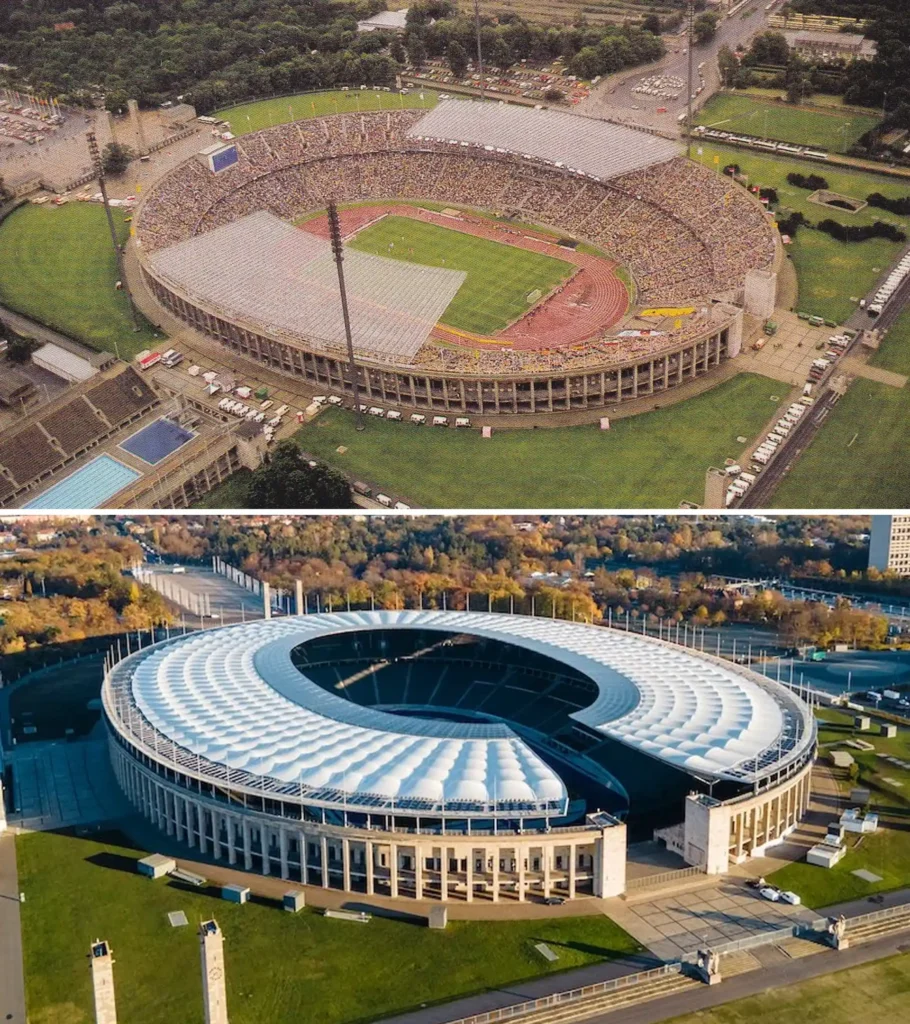
5. Olympiastadion – Berlin, Germany (2006)
One of the most architecturally unique World Cup stadiums.
Renovated for 2006, it combined its historic 1936 exterior with a striking modern oval roof.
Why it’s legendary:
- Zidane’s final match (2006 Final)
- Stunning architectural mix of old and new
- One of Europe’s most photographed stadiums
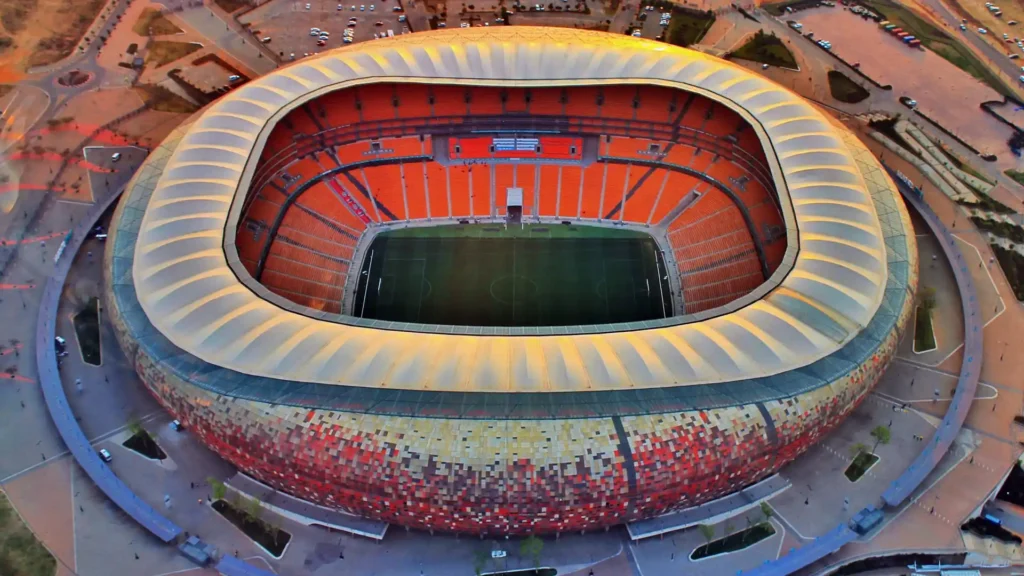
6. Soccer City (FNB Stadium) – Johannesburg, South Africa (2010)
A modern African masterpiece.
The calabash-shaped exterior became the global symbol of the 2010 World Cup — Africa’s first.
Why it’s legendary:
- First-ever World Cup on African soil
- 2010 Final: Spain’s first World Cup win
- Iconic mosaicked golden façade
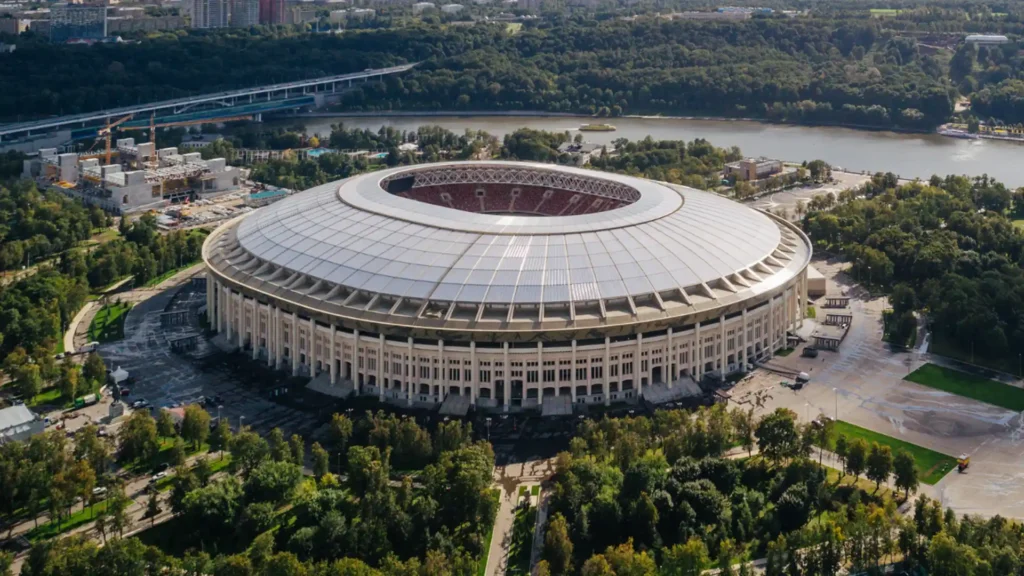
7. Luzhniki Stadium – Moscow, Russia (2018)
A historic Soviet stadium transformed into a modern football arena.
Luzhniki hosted the opening match and the final of the 2018 World Cup, becoming the centerpiece of a beautifully organized tournament.
Why it’s legendary:
- 2018 World Cup Final
- Classic bowl shape renewed for modern football
- One of Europe’s great iconic arenas
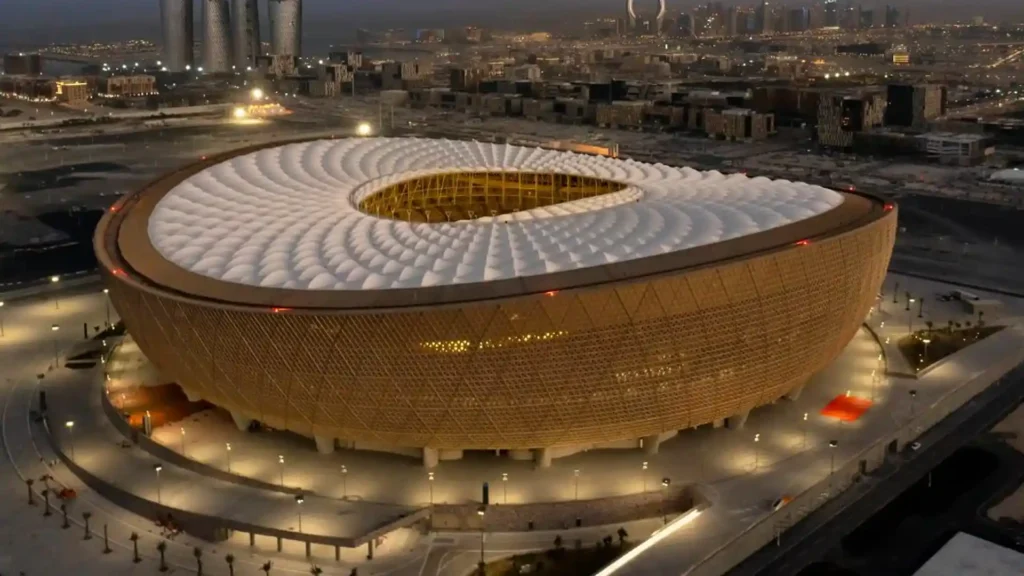
8. Lusail Iconic Stadium – Lusail, Qatar (2022)
A futuristic masterpiece.
Lusail instantly earned legendary status after hosting the 2022 World Cup final — one of the greatest matches ever played.
Why it’s legendary:
- 2022 Final: Messi’s crowning moment
- Golden exterior and dramatic geometry
- A symbol of modern stadium design
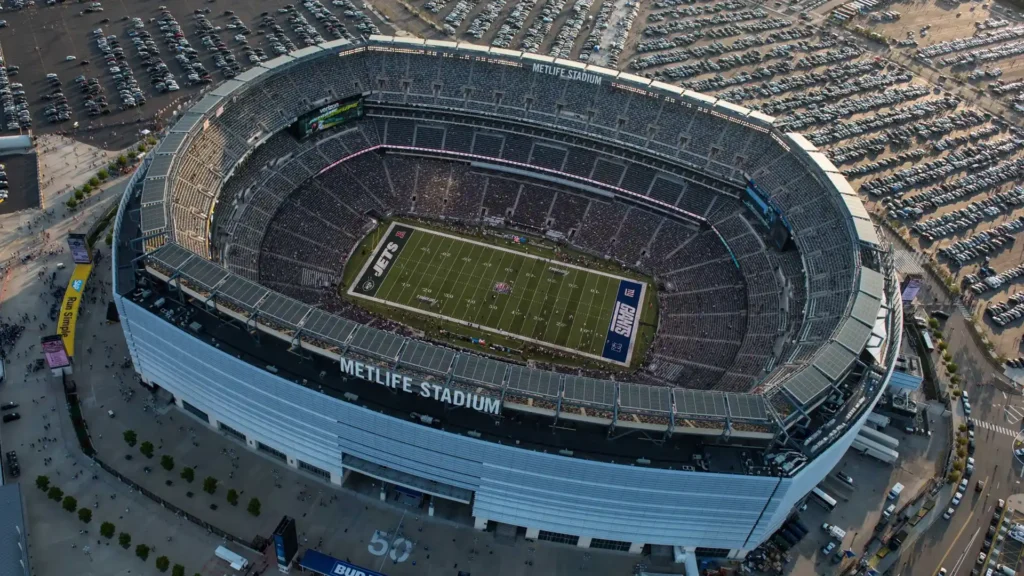
9. MetLife Stadium – New Jersey, USA (2026)
Set to host the 2026 World Cup final, MetLife is a modern giant located near New York City.
With massive capacity, global accessibility, and enormous commercial areas, it will become the next chapter in World Cup stadium history.
Why it’s legendary (future):
- Expected 2026 World Cup Final venue
- Largest capacity in the 2026 tournament
- A modern American mega-arena
From Montevideo in 1930 to New York in 2026, these stadiums tell the complete story of the World Cup.
Some are historic cathedrals, others futuristic super-arenas — but all of them hosted moments that changed football forever.
Each one is more than concrete and steel; it is a monument to global passion, drama, and the shared history of the world’s game.







